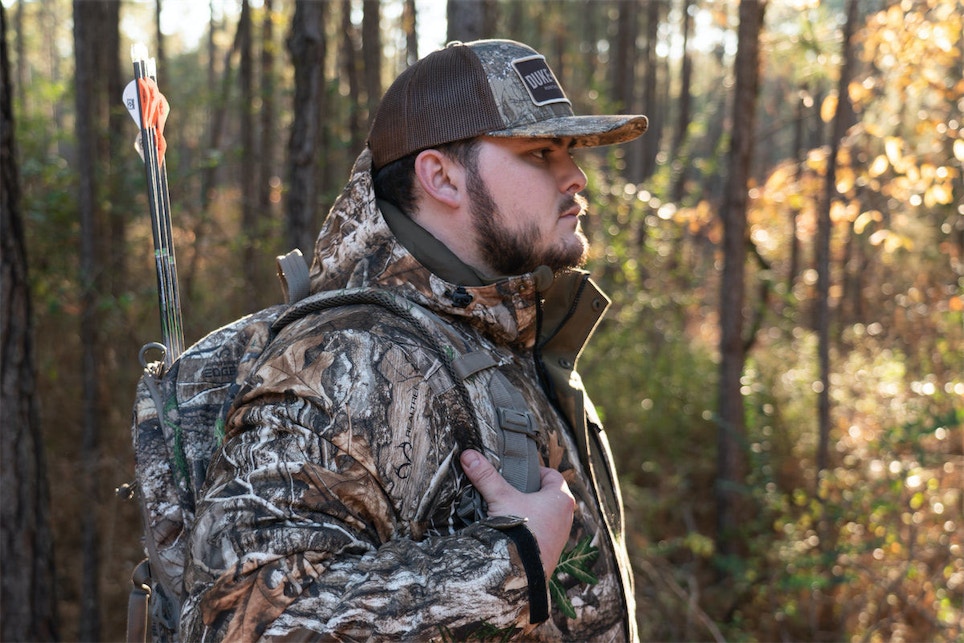Clothing is a very personal thing. Therefore, focusing on the individual is necessary in every sale.
With that in mind, consider two words: performance and perception. Both are important for selling apparel in the shooting sports industry. And they need to be paired properly for maximum success — not unlike pairing the right wine with the right food.
Performance is easy. Manufacturers provide all of the information needed to determine the performance levels of their products, and that information can be relayed as a starting point in the sales procedure.
It’s in the perception of that performance that we go from science to art. The actual performance is the science, while the perceived performance and value of that perception is the art. In sales, perception is reality.
What the customer perceives an item to be is what that item is to that customer, regardless of what it might be to the retailer or other customers. And, most important, that perception determines whether there will be a sale. Always, sales hinge on value perception. But value alone doesn’t close the deal. Once value is recognized, there has to be a trigger to nail the sale.
That trigger is the perception in the customer’s mind that, not only is that the right piece of apparel, but that the customer can see himself or herself wearing and using that item.
To a great degree, what people wear is part of defining who and what they are. That’s why logo wear sells so universally. It affords a defined identity to the wearer, who may lack any independent self-identity. Don’t sell short the reality of brand identity and brand loyalty in apparel sales. Customers often identify with a particular maker and are predisposed to purchase different pieces of apparel from the same maker. It is more than simply coordinating a look. It is an allegiance. Use it to upsell.
Also, it is beneficial to understand where impulse buying and reasoned buying fit into the apparel sales picture. Low-end, inexpensive items like T-shirts and caps fall into the impulse category, while high-end boots and parkas fall into the reasoned category.
Although it is difficult to upsell an impulse buyer to purchase a high-end item, it is quite simple to upsell a reasoned buyer with an impulse item.
Translate that to mean that you probably won’t sell a pair of $400 boots to an impulse buyer, but it is simple to sell a $10 or $15 T-shirt or cap to a customer while ringing up the boots.
Generally, there is enough of a markup on apparel to be able to be creative with upsells. For example, if the customer is buying a $150 parka, why not offer to add a $15 T-shirt, either as a giveaway, or for an extra $5 or $10? The dollar differential for the customer is not much, but when multiplied by a number of customers, it can represent a nice bump to the bottom line. And it can make the customer feel better in the process. Win-win.
Apparel can always be used to introduce accessories. In fact, accessorizing apparel is what ultimately creates a person’s “look.”
As much as hunting and shooting accessories should represent a significant contribution to the overall bottom line across all categories, and upselling accessories is a logical way to round a $150 apparel sale up to a $200 apparel and accessory sale. Think gloves, socks, belts, etc.
The idea is not to trick customers into buying things they really don’t want. That’s counterproductive. The secret is to help them get what they really want, even if they couldn’t verbalize it when they walked through the door. This is where thoughtful and creative customer service in a physical store with a real, human sales force can outperform any online retailer.
People relate to people, and this plays to the strengths of independent, brick-and-mortar retailers. All of the sales and promotions in the world won’t get the job done if the customer doesn’t perceive value. And that perception can be enhanced with effective personal interactions.
We’re talking about the entire sales package rather than its individual parts. When the sales force literally walks the customer through the buying process, there are opportunities to increase the number and dollar amounts of the sales while assuring that the customer gets everything he or she wants or needs. It’s bringing emotion into what might otherwise be a cold, deliberate decision.
Good emotions mean the customer feels good about the process. They get what they want or need. You get the sale and the profit from it. And, to cap it off, you both feel good about it.
If customers get what they want and feel good about it, they’ll be back. Retailers always do themselves favors by doing their customers favors. It ain’t rocket science.






